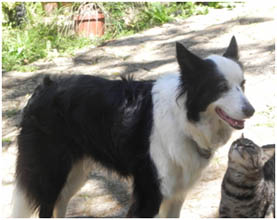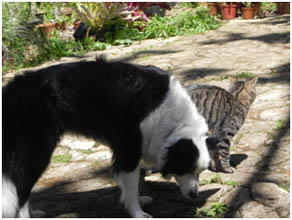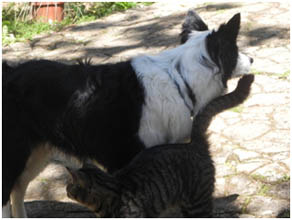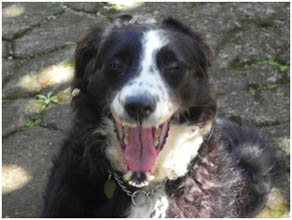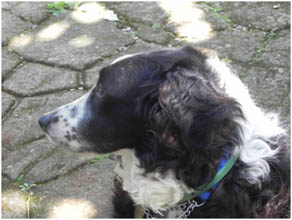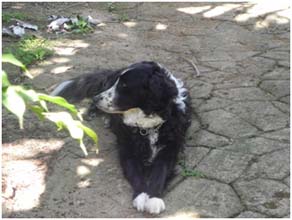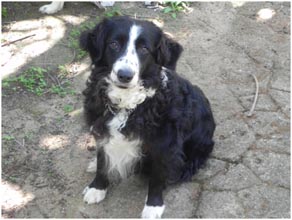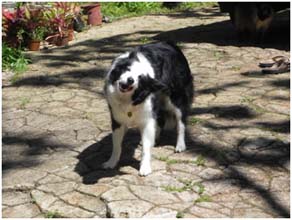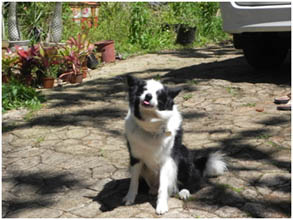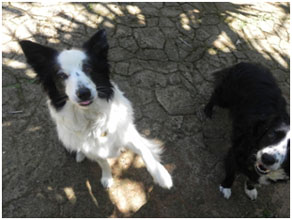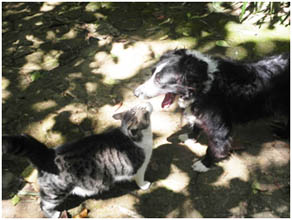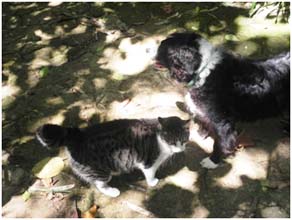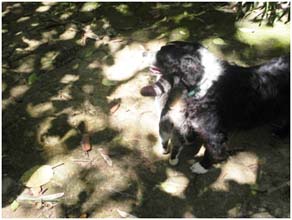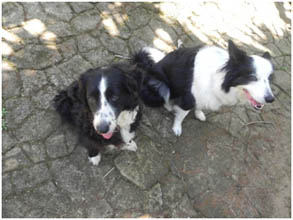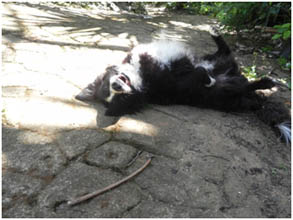 |
||||||||||||||||||||||||||||||||||||||||||||||
| |
Home | About Us
|
Services |
Products |
Pet Identification |
Pet Health Insurance | | Breeder News | News | Articles | Tick & Flea Control | Dog Training | Dental Health | | Cat & Dog Vaccinations | Cat & Dog Sterilisations | | Chew on This Newsletter | Links | |
||||||||||||||||||||||||||||||||||||||||||||||
|
Dog Communication (Negotiation Signals) |
||||||||||||||||||||||||||||||||||||||||||||||
|
Humans largely rely on the spoken language to communicate their
thoughts and feelings. In the dog world, communication by vocal
means is a very minor part of dog language as dogs mainly use
body signals to express themselves. If you wish to understand
what dogs are saying you will need to learn how to read the
various body signals that they are giving.
In a dog’s world personal space and belongings are extremely
important, and their conception of safety lies in their ability
to read whether a situation is safe or dangerous.
In the wild, canids’ survival depends on protecting themselves,
their pack and their territory. As a result, canine aggression
is mostly about space invasion, and mostly what a dog
communicates is about their personal space. “May I enter your
space?’, “Yes, you may approach and share this space with me” or
“Yes, you may come close, but don’t touch me” or “Get away from
me!”. For each of these sentences your dog has a specific set
and combination of signals to express his intentions.
Dogs have an amazing understanding of human language. Don’t we
owe it to them to try to learn some of theirs?
Take for instance the following scenario:
If I am in a queue and someone persists in bumping into me, it
would be acceptable for me to ask them to stop. It would be an
extreme overreaction to take out a gun and shoot them. However
if in spite of my request they persisted, it would be necessary
for me to get more defensive if I wished to stop the assault.
Well-mannered dogs follow a very similar procedure. If another
dog rudely enters their space they will give a mild warning. If
the other dog doesn’t heed this warning and disrespectfully
persists and continues to invade the space, the invaded dog must
choose between having no personal space or making it more clear
to the rude intruder that this won’t be tolerated. Some dogs
have lost their natural language due to unintentional bad
training by their owners. For instance: Dogs do not approach one
another front on the way humans do. In dog talk this is
extremely rude and confrontational. But many owners when taking
their dogs for a walk, walk straight on up to another human and
dog. A polite dog would curve away and avoid direct eye contact
when approaching another dog.
By the same token, dog-owners often find it acceptable to allow
their dogs to rush up to another dog’s face (literally “in your
face”) or jump up onto a human or dog. They wrongly think this
means that their dog is friendly. Most dogs would rightly
consider this approach extremely rude. Unaware of all the subtle
signals the invaded dog has
given, the owner of the rude dog unfairly blames the invaded dog
when it retaliates with a snap. Thus the real offender is
wrongly consoled and the invaded dog blamed.
Well-mannered dogs do not rush up into another dog’s space. They
politely ask the other dog, using negotiating signals, whether
it is acceptable or not to do so. Dogs raised in multiple dog
households are able to practice manners frequently and learn how
to understand dog language.
References: Aggression In
Dogs by Brenda Aloff; Canine Body language by Brenda Aloff;
On Talking Terms with Dogs: Calming Signals by Turid Rugaas;
Barking the Sound of Language by Turid Rugaas.
|
||||||||||||||||||||||||||||||||||||||||||||||
|
||||||||||||||||||||||||||||||||||||||||||||||
|
Also see: |
||||||||||||||||||||||||||||||||||||||||||||||
 |
||||||||||||||||||||||||||||||||||||||||||||||
| © 2011 - 2013 Vet Hospital Port Shepstone - www.vet-portshepstone.co.za | ||||||||||||||||||||||||||||||||||||||||||||||
